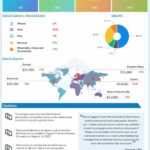
In mid-July, the FTX bankruptcy estate launched a $320 million lawsuit against the executives of subsidiary FTX Europe. Led by former Enron steward John Ray III, the debtor’s estate has been on a crusade to claw back funds for the failed crypto exchange, and FTX Europe was its latest target among a parade of other recipients of FTX capital, from politicians to hedge funds.
In the lawsuit, Ray’s team alleges that the initial acquisition of the entity that became FTX Europe was a disastrous business decision stemming from its executives’ personal ties to FTX founder Sam Bankman-Fried, as well as their false claims of regulatory connections that could catalyze overseas business.
Documents and interviews with insiders paint a different picture. FTX Europe provided one of the exchange’s core services—perpetual futures trading—to the European market and continued to add tens of thousands of users before the empire collapsed. Despite the failure of its parent company, FTX Europe has drawn acquisition interest from buyers in recent months, including Crypto.com, the company behind the infamous Matt Damon Super Bowl ad.
But FTX, which owes more than $3 billion to an estimated 1 million creditors, doesn’t appear interested in offloading or re-launching FTX Europe, instead intending to remove it from the Chapter 11 bankruptcy proceedings, likely for liquidation. According to bankruptcy experts, the case illustrates the complexity of the bankruptcy—and the Ray team’s desire to signal a new era for the embattled firm.
Fortune favors the brave
Before its acquisition, FTX Europe was a Swiss company called Digital Assets DA AG. Founded in 2020, the firm’s main offering was a white-labeled service for exchanges to offer tokenized stocks, a popular feature across different crypto exchanges that allowed users to trade shares at any hour. DAAG was also working with Solana—where it was already live—and Ethereum to develop a tokenized version of stocks that could be traded like crypto tokens, according to a person familiar.
DAAG provided the tokenized stock service to FTX along with Binance and Bittrex, and was in the process of onboarding with Kraken, according to two people familiar with the matter. Through the acquisition of a Cypriot company, DAAG was also poised to secure a key operating license that would allow it to offer perpetual futures contracts across Europe, a product that allows for high-leverage crypto trades. Perps, as they’re known, already were one of FTX’s most popular products. Bankman-Fried, according to two people familiar, pursued the acquisition of DAAG to expand perps to Europe and shut out competitors.
DAAG had healthy profits when FTX bought it in November 2021, with an EBIT of around $7.3 million in the period of July 2020 to December 2021, according to a financial statement viewed by Fortune. By contrast, LedgerX—a U.S. futures exchange that FTX acquired in August 2021 for around $300 million—lost $6.1 million in 2021, according to a financial statement viewed by Fortune. LedgerX was sold as part of FTX’s bankruptcy in April 2023 for just $50 million, which offers the best comparison of a potential sales price for FTX Europe.
According to financials of FTX Europe viewed by Fortune, the platform peaked at around $60,000 traded per user per month in September 2022, two months before FTX collapsed, and the following month it added 23,000 new users. (FTX claims in its lawsuit against the subsidiary that it was “unable to verify or rationalize basic Key Performance Indicators that could be provided to potential buyers.”)
And there were potential buyers: FTX Europe’s key license—and unique ability to offer perps—is what attracted them. According to a declaration filed in January 2023 to the Delaware bankruptcy court by the FTX estate’s investment bank, PWP, approximately 40 parties expressed interest in acquiring FTX Europe. Franco Lorandi, the FTX Europe administrator, has been telling employees to look for potential buyers, according to a person familiar. Lorandi declined to comment for this article.
According to an email viewed by Fortune, Crypto.com’s executive vice president of operations, Mariana Gospodinova, communicated with Lorandi about a potential acquisition in mid-June. “Our organization is interested in exploring the feasibility of reactivating the firm’s license under our own brand,” she wrote, requesting further details on the “prospects of acquiring and operating it under our ownership.”
“We are not interested in acquiring FTX Europe or any other FTX entity for that matter,” a Crypto.com spokesperson told Fortune in a statement in mid-July.
According to two people familiar, other interested parties have included Wei Zhou, the CEO of a Philippines-based exchange Coins.ph and former CFO at Binance, as well as FTX FDM, the Bahamian entity of FTX that’s currently under the control of liquidators appointed by the country’s Supreme Court. Zhou did not respond to a request for comment. A spokesperson for the Bahamian liquidators, PricewaterhouseCoopers, declined to comment.
In a statement shared with Fortune, the FTX bankruptcy estate said it had spent months with professional advisors for a possible sale but found nothing to sell, with no discussions leaving the due diligence phase: “The FTX Debtors’ professional advisors have concluded that there is no realistic possibility of a sale.”
A new sheriff in town
Instead of selling FTX Europe, the bankruptcy estate opted to sue its executives. In the lawsuit filed in mid-July, the debtors argue that FTX only pursued DAAG because its executives were close associates of Sam Bankman-Fried, despite it having “limited business,” and ultimately paid nearly $400 million for the acquisition. Excoriating Bankman-Fried’s FTX for “severely” overpaying, the bankruptcy estate alleges the “hollowness” of DAAG’s value proposition could have been exposed with a “modicum of regulatory due diligence.”
Nevertheless, a valuation report conducted following the acquisition by the accounting firm BDO—and reviewed by Fortune—found that “the transaction was consummated in an arm’s length basis by knowledgeable, unrelated parties,” adding that “it is reasonable to presume that the transaction consideration represents fair value as viewed by a typical market participant.”
A spokesperson for the FTX debtors said the report “simply assumes that the purchase price reflected fair value because it was ‘arms-length,’ and one cannot, of course, presume the fairness of a fraudulent transaction from the fact that it took place.”
Key aspects of the lawsuit likely remain true, especially if FTX is proven to have fraudulently used customer assets by a U.S. court. The bankruptcy estate alleges that the defendants used the proceeds of the acquisition and subsequent payouts to fund a lavish lifestyle, which would qualify as fraudulent transfers. Even so, interviews and documents call into question the FTX bankruptcy’s estate framing of a disastrous business deal.
Patrick Gruhn and Robin Matzke, the cofounders of DAAG and later executives of FTX Europe, declined to comment when reached by Fortune. A third defendant and DAAG employee, Brandon Williams, did not respond to request for comment.
James Timko, an attorney for the law firm Dean Mead with a background in bankruptcies, described the lawsuit as an academic economic decision. Because FTX acquired DAAG for $400 million, the bankruptcy estate is trying to recover as much money as possible through the lawsuit against FTX Europe’s executives. Later, it could decide to sell the entity, although given LedgerX’s recent sale for $50 million, the estate likely wouldn’t recoup as much as it may hope.
“The trustees made the calculus that it wasn’t worth $320 million,” Timko told Fortune, referring to the size of the lawsuit.
Evan Jones, a restructuring partner at the law firm O’Melveny & Myers, said that the duty of debtors is overwhelmingly to maximize the financial value for creditors. In this case, he argued that the estate likely thinks it can do so by holding on to FTX Europe and continuing to operate it. Indeed, FTX shared a draft plan earlier this week to launch a “rebooted offshore platform,” although it is unclear if it would include FTX Europe.
Jones said the strong stance could reflect how the FTX estate views the case and its position against the FTX Europe executives. As he told Fortune, the complaint is going to be “more incendiary if you think the facts are bad.”
While it may not reflect the reality of FTX Europe’s value, Jones said the estate likely has another goal in mind.
“The new sheriff came in,” he said. “When he goes to talk to people, whether it’s reorganization or sales, he has got to convince them that things were in really bad shape when [he] arrived, but they’re a lot better now.”
The situation became further complicated on Wednesday after Sullivan & Cromwell, the law firm employed by the bankruptcy estate, sent a letter to the Cypriot regulatory agency overseeing the key FTX Europe entity. In the letter, viewed by Fortune, the lawyers write that the estate no longer intends to provide financial support to FTX EU. Moreover, the estate plans to dismiss the Chapter 11 case of FTX EU—a move that would likely lead to the liquidation of FTX Europe, as the estate recently tried with FTX Dubai. In such a case, FTX Europe would not be able to re-launch or find a buyer for its operating license.
When reached again on Wednesday, the spokesperson for the FTX debtors declined to comment further on the matter.








